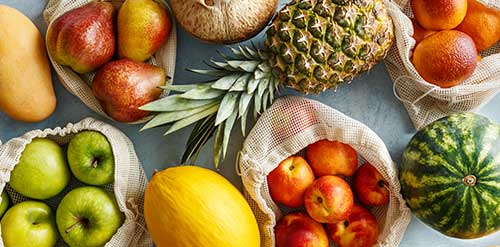Hyundai Motorstudio Senayan Park
Hyundai Motorstudio Senayan Park
Newsroom
-
Get In to F&B Business? Here Are 5 Examples of Eco-Friendly Packaging
- Hyundai Motorstudio Senayan Park 2022.06.17
-
The majority of product packaging is made of synthetic plastic. Unfortunately, plastic is the biggest pollutant because it takes hundreds of years to decompose naturally.
The food and beverage (F&B) business is one of the biggest users of plastic. Most plastic contains polyvinyl chloride (PVC), one of the most harmful toxic compounds.
Other compounds that are equally dangerous are ethylene dichloride, dioxins, phthalates, lead, and cadmium, all of which are contained in plastics.
Why Should You Use Eco-Friendly Packaging?
The short answer, to prevent environmental damage!
The logic is simple, the part of the product that is always wasted is the packaging which mostly ends up as garbage. It will be a problem if the packaging is classified as non-degradable material.
Take an example when ordering pizza online. What is really needed is just the pizza, while the cardboard packaging and plastic wrap often end up being trash. For the environment, this is clearly a disaster given the nature of plastic.
Regarding product packaging, Oceania explained that Amazon alone was able to produce packaging waste of up to 211 million kg in 2019. You can imagine how much it will be in the next few years.
These statistics show that it is important for businesses to use eco-friendly packaging. Besides ending up as garbage, plastic must also be avoided related to health.
As already mentioned, the majority of plastic content is harmful. Especially for the F&B business, packaging made from synthetic plastics should be avoided. When used to wrap food, the chemical compounds in the plastic can contaminate it.
Using eco-friendly packaging is the best solution to overcome these conditions. The data from McKinsey shows that today's shoppers are more concerned about the effect of packaging for the environment, and 70% of buyers are willing to pay more to use eco-friendly packaging.
Moreover, adopting eco-friendly packaging shows consumers that the F&B business is committed to protecting the environment.
5 Eco-Friendly Packaging Options
Eco-friendly product packaging is made of materials that are easily biodegradable by organisms so that no waste left. But, what kind of eco-friendly packaging materials? Here's the choice!
1. Recycled Cardboard
Replace standard packaging cartons with recycled cardboard. That way, no forest will be cut down just to produce cardboard which eventually becomes waste. By reusing what already exists, the waste accumulation can be reduced.
Recycled cardboard will help you to avoid any chemical exposure from plastic materials. An estimated 165 million packages circulate annually, just for America. The number of cartons is equivalent to 1 million trees.
These statistics are only for 1 year, 1 out of 195 countries, and 1 portion of the total volume of ecommerce in the world. Recycled cardboard is environmentally friendly, and as a F&B businessman who wants to protect the environment, start here!
2. Bubble Wrap Paper
The F&B business can vary. In some types of food or dishes, bubble wrap is needed to cover the food to maintain its shape. Salads, breads, fruit, and pastries should be in bubble wrap before it delivered.
Since bubble wrap is made of plastic which is not eco-friendly, it must be stopped. The new innovation of bubble wrap from paper begins to appear with the same function.
Paper bubble wrap is designed from a long sheet of paper that is folded and punched to make the same cushioning effect as bubble wrap, which is shock absorption.
3. Biofoam
Styrofoam material is non degradable even for hundreds of years. This issue has been going on for a long time, so several countries have banned Styrofoam, especially for F&B products.
Biofoam then emerged to replace Styrofoam because it is more eco-friendly. The main material of biofoam is made of starch combined with fiber to strengthen its structure. Though, the durability aspect is low, so its use is limited to F&B products with low water content.
4. Leaves
Leaves are a type of packaging that is abandoned because it is considered as old-fashioned. Though there are many benefits.
It is clear that leaves are organic materials that are easily degradable, and certainly free of chemicals. For the F&B business, the use of leaves is clearly more recommended. Whether for dry or wet dishes, the leaves can be used.
Several leaves that are commonly used such as banana leaves, coconut leaves, bamboo leaves, teak leaves, taro leaves, guava leaves, and bowl leaves. Besides being eco-friendly, leaves offer a traditional feel that is related to healthy food. Unfortunately, some types of leaves are now getting hard to find.
5. Bamboo
Besides the leaves, bamboo stems offer the same benefits. Eco-friendly is obvious, unique is for sure!
In fact, many modern coffee shops are starting to replace their cups with bamboo. Besides being more eco-friendly, bamboo offers a unique value.
For product packaging, woven bamboo is shaped like a basket or other according to its use. Although it is quite strong and reliable, unfortunately the bamboo is considered less flexible.




